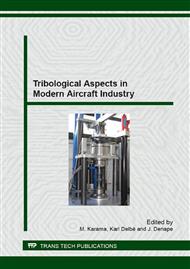p.1
p.13
p.21
p.29
p.35
p.43
Reliability Analysis of Buckling Limit State for Friction Stir Welded Aircraft Stiffened Panels
Abstract:
Buckling of stiffened panels is strongly affected by initial geometric imperfections. The panel assembling technique used can influence both the initial geometric imperfections pattern and material inohomogeneities. It was recognized for the particular case of stir friction welded stiffened panels that the presence of a weld can decrease significantly buckling strength. This is mainly due to the reduction in material strength in the weld zone. In this work, stir friction welded stiffened panels are modeled by using the finite element method. The modelling takes into account distributed and localized initial geometric imperfections as well as material degradation that are generated in the heat affect zone by this process. A parametric study was conducted on the effects of magnitude of geometric distributed imperfections; position, length and depth of a localized depression; as well as material degradation occurring near the weld stripe. Artificial neural network models were built by using the results of various simulations performed according to full factorial design of experiment tables. This has enabled to assess reliability of design of a stiffened panel with regards to the buckling limit state by means of Monte Carlo approach.
Info:
Periodical:
Pages:
35-42
Citation:
Online since:
March 2015
Authors:
Price:
Сopyright:
© 2015 Trans Tech Publications Ltd. All Rights Reserved
Share:
Citation:


